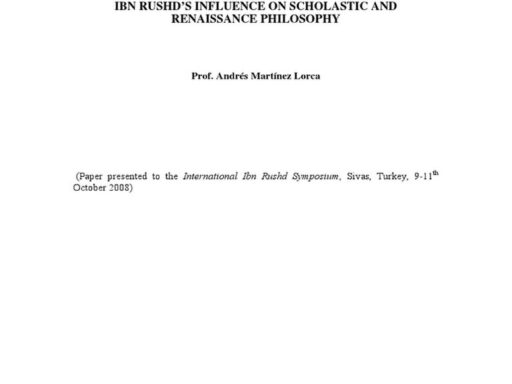It was very uncommon for German or Austrian-Americans to leave the USA and return to Germany to serve in the Wehrmacht or SS during World War II. Reliable data shows that no official or widespread recruitment efforts targeted this group in the United States. The portrayal in Band of Brothers, where a German POW from Eugene, Oregon, mentions his family “answering the call” to return to Germany, reflects a highly unusual and rare situation rather than a common pattern.
Recruitment of foreign volunteers by Nazi Germany occurred mostly in occupied or neutral countries. These efforts were often documented through propaganda and military records. Well-known foreign volunteer units, such as the Skanderbeg Division (Albanian) or the Arab Free Legion, resulted from organized recruitment campaigns. Conversely, no similar drives existed in the US.
Military archives, especially those held at the US National Archives and Records Administration (NARA RG 131), contain no evidence of propaganda campaigns or recruitment programs aimed at American-born Volksdeutsche (ethnic Germans). Consequently, any individual from the US who joined the German military did so without official recruitment channels and often illegally. The Wehrmacht and Waffen-SS leadership files lack detailed records of Americans enlisting or returning to Germany.
- In occupied countries, recruitment was legal and encouraged. The US, being a sovereign and non-occupied nation, prohibited such activities.
- Any American who volunteered for the German side risked legal consequences upon return.
The German American Bund, often associated with Nazi sympathies in the US, disintegrated before America entered the war. Its leader, Fritz Julius Kuhn, was jailed in 1939 for embezzlement. The Bund left no significant record of organized recruitment efforts to bring ethnic Germans back to Germany. Official documents also show that later Bund leaders lacked influence or capacity for major recruitment drives.
The phrase “answering the call,” as used in Band of Brothers, likely represents the character’s personal or family perspective rather than an official call to arms. It may reflect allegiance to Nazi ideology by some individuals, but no institutional program existed in the US encouraging German-Americans to return.
Research into the identities and backgrounds of German-born or American-born soldiers in the Wehrmacht is extremely difficult. The Deutsche Dienstelle Wehrmachtsauskunftsstelle (WASt), which holds German military personnel records, does not maintain sortable lists by birthplace or nationality. Access to these records requires specific names and consent due to privacy laws.
| Factor | Details |
|---|---|
| Official Recruitment in US | Non-existent for German-Americans; illegal and undocumented |
| German American Bund | Declined before WWII; no significant recruitment activities |
| Volunteer Numbers | Estimated under 50 Americans in Wehrmacht or SS |
| Records & Identification | Restricted access; no sortable national origin data in military archives |
| Context in Occupied Countries | Recruitment was organized and legal; absent in US |
Given these realities, the POW’s statement in the series is likely an exception or dramatic narrative device. The circumstances under which any German-American chose to join German forces were personal, isolated, and rare. They typically involved complex motivations such as ideological sympathy, family ties, or other reasons. But such cases were very small in number compared to the broader German-American population, many of whom supported the US war effort.
The literature and archival evidence show no institutional support for any large-scale “return to Germany” movement among ethnic Germans in America. Thus, the depiction in Band of Brothers is a dramatic portrayal rather than a reflection of a widespread phenomenon.
- German-American recruitment to Wehrmacht or SS was minimal and mostly clandestine.
- No official or legal recruitment programs existed in the US during WWII.
- The German American Bund did not orchestrate significant returns to Germany.
- Archival records on American-born German soldiers are scarce and hard to access.
- Any involvement was based on individual choices rather than mass mobilization.
How Common Was It for German/Austrian-Americans to Leave the USA and Return to Germany During WWII?
In short, it was VERY rare for German or Austrian Americans to leave the USA and return to Nazi Germany during World War II, despite what dramatic moments like the one in *Band of Brothers* might suggest. But why? Let’s unpack this intriguing historical detail and separate fact from fiction—or should I say, truth from Hollywood flair.
In *Band of Brothers*, there’s a scene where Donald Malarkey, a member of Easy Company, chats with a German POW. The POW reveals he’s from Eugene, Oregon, and explains his family “answered the call” for all true Aryans to return to Germany. This moment raises a fascinating question: how often did German-Americans actually pack their bags and head back to the Third Reich?
1. Hunting for Truth: The Difficulty in Finding Reliable Data
This question isn’t easy to answer because reliable records are scarce. Historians mainly learn about foreign volunteers in the Wehrmacht (Germany’s army) and Waffen-SS from post-war trials and German military archives. The catch? Recruitment of citizens from neutral or non-occupied countries—like the US—was illegal under international law. As a result, official records about recruitment efforts in the US practically don’t exist.
In simpler terms, any German-American who might have wanted to join the Wehrmacht would have to do so quietly, without the knowledge or approval of either government. There was no big recruitment drive by Nazi Germany targeting German-Americans on US soil.
2. No Nazi Recruitment Offices in Main Street, USA
Unlike countries like Albania or the Netherlands, where Nazis openly recruited locals, the US had no organized, public recruitment for the Wehrmacht. There’s no evidence in wartime German military files of a recruitment campaign aimed at Americans with German roots. So the idea that entire units of German-Americans enlisted in Nazi Germany is more Hollywood drama than historical fact.
Most German-Americans loyal to the US stayed put—and many fought bravely against the Axis. Some volunteered for US forces, proud to defend their home country, not the land of their ancestors.
3. Digging Into the Archive: The Deutsche Dienststelle (WASt)
If you’re really Sherlock Holmes about this, the place to check is the Deutsche Dienststelle Wehrmachtsauskunftsstelle (WASt). This agency keeps files on German soldiers from WWII. But here’s the catch—they don’t let you easily search by birthplace or nationality, and you need specific names to get information.
Given nearly 18 million served in the Wehrmacht, and possibly fewer than 50 Americans among them, researching who exactly was an American-born soldier in Nazi ranks is like searching for a needle in a wartime haystack.
4. The German American Bund: Nazi Party’s Homegrown Ally—but Not a Recruiter
The German American Bund was the Nazi party’s face in the US before and during the early years of WWII. Their leader, Fritz Julius Kuhn, fell from grace when convicted of embezzlement in 1939. The Bund’s power dwindled quickly, especially after America entered the war.
Records from the Bund, archived in the National Archives and Records Administration (NARA), show no clear evidence of calls urging ethnic Germans in the US to relocate to Germany or enlist in the Wehrmacht. So if the Bund sent any signals to “answer the call,” it left faint digital footprints.
5. What “Answering the Call” Really Means
The POW’s line about answering the call in *Band of Brothers* could be just that—a line. Possibly a throwaway reference echoing propaganda slogans from Germany aimed mainly at Volksdeutsche (ethnic Germans living outside Germany). It’s worth noting that Germany sought to rally ethnic Germans in occupied territories like Poland or Czechoslovakia to join their forces, but that propaganda didn’t have official reach in the US.
So, the POW’s story might hint at family ties or personal decisions rather than widespread recruitment or mass migrations.
Why Did Some German-Americans Consider Returning?
Others had deeply rooted family connections, perhaps reflecting on cultural identity or personal history. But this was not a widespread or well-organized phenomenon.
A Realistic Perspective
For most German-Americans—comprising about 10% of the US population at the time—loyalty to their new home outweighed any allegiance to Germany. Many proudly served in the US military and contributed to the Allied war effort. The patriotic American response was overwhelmingly to stand against the Axis powers, including Nazi Germany.
What Can We Learn from This?
Hollywood sometimes simplifies or dramatizes history for storytelling. *Band of Brothers* gave us a gripping snippet but without broader context, it could mislead. The story of that German POW from Oregon is an exception, not the rule.
For historians and curious minds, the lesson is clear: always check multiple sources. Understand that propaganda and personal stories are often tangled up with wider geopolitical realities. The US government never allowed official Nazi recruitment on its soil. The German American Bund was fragmented and limited in reach, especially later in the war. And concrete proofs of mass German-American migration to Nazi Germany simply don’t exist.
Final Thoughts: The Power of a Name
If you meet a German POW from Oregon, it’s a story worth listening to. It shines light on some individuals’ complex identities during turbulent times. But as a whole, “answering the call” back to Nazi Germany was a rare journey. Most German-Americans stayed firm in the US, embracing their American identity while wrestling with their heritage.
Next time you watch WWII dramas, remember: behind every line lies a complex history, and sometimes the truth is more fascinating than fiction!


